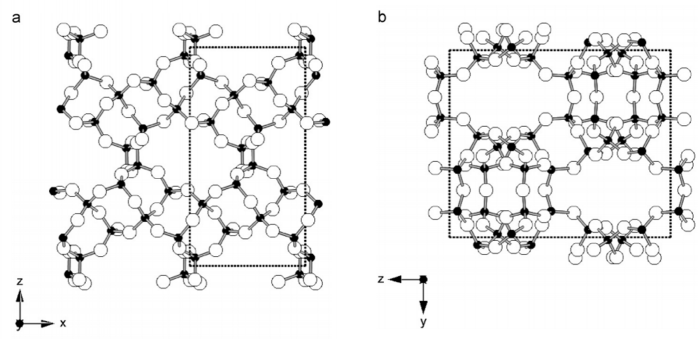“Cation-dependent anomalous compression of gallosilicate zeolites with CGS topology: A high pressure synchrotron powder diffraction study”
- Authors
Y. Lee,* H.-H. Lee, D.R. Lee, S.J. Kim and C.-C. Kao
- Journal
Journal of Solid State Chemistry
Vol.181, No.4, pp.730-734, 2008.04 - DOI
Abstract
The high-pressure compression behaviour of 3 different cation forms of gallosilicate zeolite with CGS topology has been investigated using in situ synchrotron X-ray powder diffraction and a diamond-anvil cell technique. Under hydrostatic conditions mediated by a nominally penetrating pressure-transmitting medium, unit-cell lengths and volume compression is modulated by different degrees of pressure-induced hydration and accompanying channel distortion. In a Na-exchanged CGS (Na10Ga10Si22O64·16H2O), the unit-cell volume expands by ca. 0.6% upon applying hydrostatic pressure to 0.2 GPa, whereas, in an as-synthesized K-form (K10Ga10Si22O64·5H2O), this initial volume expansion is suppressed to ca. 0.1% at 0.16 GPa. In the early stage of hydrostatic compression below ∼1 GPa, relative decrease in the ellipticity of the non-planar 10-rings is observed, which is then reverted to a gradual increase in the ellipticity at higher pressures above ∼1 GPa, implying a change in the compression mechanism. In a Sr-exchanged sample (Sr5Ga10Si22O64·19H2O), on the other hand, no initial volume expansion is observed. Instead, a change in the slope of volume contraction is observed near 1.5 GPa, which leads to a 2-fold increase in the compressibility. This is interpreted as pressure-induced rearrangement of water molecules to facilitate further volume contraction at higher pressures.












